




Fair schedule inside
Klickitat County Fair & Rodeo
August 14 -17, 2025
Klickitat County Fairgrounds
A special publication of The Goldendale Sentinel







Fair schedule inside
Klickitat County Fair & Rodeo
August 14 -17, 2025
Klickitat County Fairgrounds
A special publication of The Goldendale Sentinel

Summer isn’t summer without the Klickitat County Fair, and this year’s promises to be one of the best ever.
This year’s theme is “Hawaiian Hoedown.” Kinda makes you picture Don Ho singing “Harvest Moon.”
The Grand Marshals for this year’s Fair are Bruce and Peggy Davenport. Their history in Klickitat County and their steadfast support of the County Fair make them natural choices for this honor.
Our Harvest section is about more than the County Fair, though. It’s a celebration of late summer in one of the most beautiful regions of

the state of Washington, an agricultural haven and an idyllic place to live, work, worship, and play, all activities in which the residents of this blessed
county partake. If you’re new to Klickitat County, be sure to drop in at the Goldendale Chamber of Commerce on Broadway where you

can load up on tons of information on things to do, places to see, fine eateries in the area, and friendly faces and smiles.
The Goldendale Sentinel is proud to have served Goldendale and Klickitat County for 146 continuous years, publishing its first edition in 1879, making us the oldest business in the county and one of the oldest newspapers in the state. Visit us online at www.GoldendaleSentinel. com.
The Goldendale Sentinel 117 W. Main Street Goldendale, WA 98620 (509) 773-3777 Info@Goldendale Sentinel.com


Melissa Uhles
With the Klickitat County Fair and Rodeo at hand, 4-H kids are busy preparing to show their animals. Emma Meagher is one of those participants busy getting ready for the big event. I asked her some questions to learn more about her 4-H group and what happened in the weeks leading up to the Fair.
Sentinel: Which 4-H group are you a part of?
Emma: I’m with Central Klickitat 4-H for Sheep.
Sentinel: How often do you all meet, and who runs the group?
Emma: Our lamb group meets once a month in the beginning
and once a week as the fair gets closer. We practice working with the lambs together. Holly Heilman, our 4-H group leader, hosts the meetings at her house.
Sentinel: Is the leader a volunteer?
Emma: She is, and she sells the lambs to the kids at the start of the program.
Sentinel: How long have you been a member?
Emma: Eight years.
Sentinel: Do you name your animals? If so, what did you name your lamb?
Emma: His name is Beef.
Sentinel: That’s funny.
Emma: A couple of years ago, I walked my lamb to McDonald’s.


We went through the drivethrough. Cars were looking and curious why we had lambs at McDonald’s.
Sentinel: Did you get him food?
Emma: Yes, we all had something to eat.
Sentinel: Please share what’s involved with 4-H.
Emma: We learn how to take care of animals, and everyone helps each other out. It’s a good experience for people, and everyone gets along. You learn to do your best in the show ring and sell your lamb after that.
Sentinel: Do the animals always
sell?
Emma: Animals usually always sell after being shown. They start with a market price per pound, and it goes up from there. People bid in an auction. People will put their number up, and the lamb will go to the highest bidder. If someone has an additional animal, it might sell for the perpound price.
Sentinel: What is the ballpark profit for a lamb at the fair?
Emma: It varies year to year, but the profit is usually around $500 after everything you spend on feed and other expenses. That’s
a very good profit. Farmers, ranchers, and businesses are very generous because they want to support the kids.
Sentinel: What is involved in preparing for the fair?
Emma: You need to make sure the lamb is the right weight and has been worked with. Your lamb has to be well-trained so you can do what you need in the show ring. There is no halter used, so
the lamb must be tame.
Sentinel: What is the time frame between getting the lamb and taking it to fair?
Emma: We buy the lamb, and about three months later we go to Fair.
Sentinel: Why do people buy the lambs? Is it mostly for meat?
Emma: Yes.
Sentinel: What have you learned most from being involved with
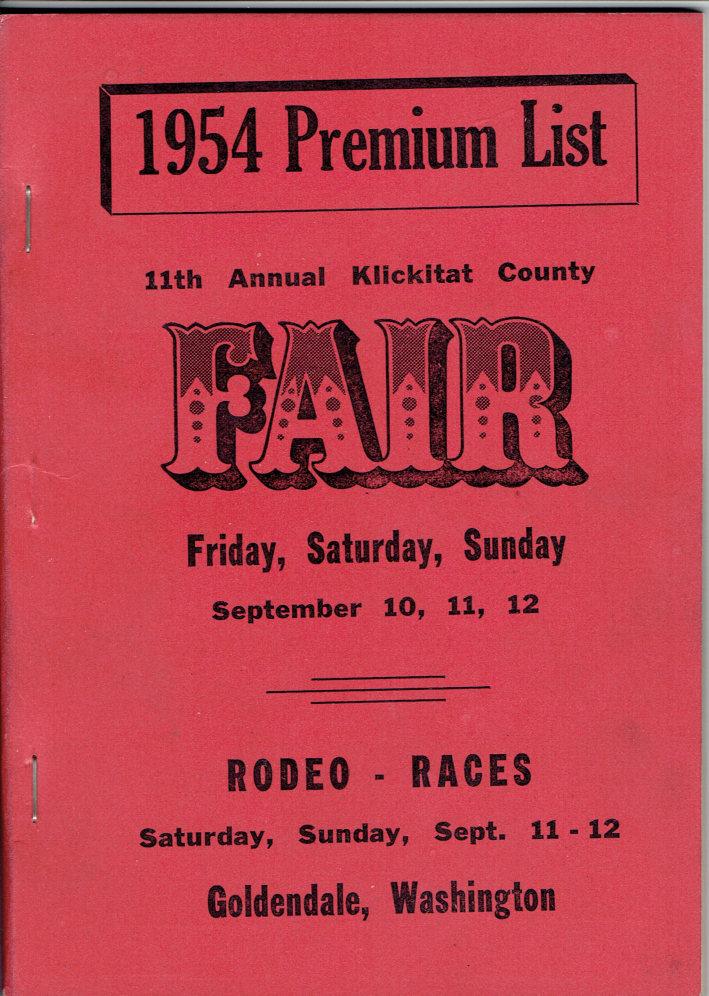
4-H?
Emma: I mostly have learned how good it is to have a community of people who care so much to help you.
Sentinel: What are the age ranges of kids involved?
Emma: It’s young kids around age 5 to 6 up through age 18.
Sentinel: If someone wants to get involved next year, who would they contact?
Emma: There is a 4-H website. For those interested in supporting the work of 4-H kids, check out all the animals at the Klickitat County Fair. Learn more at: www.klickitatcountyfair.com.
If you have kids interested in joining a 4-H group, there are multiple clubs in the Goldendale area. You can learn more here: https://extension.wsu.edu/4h/ join-4-h.

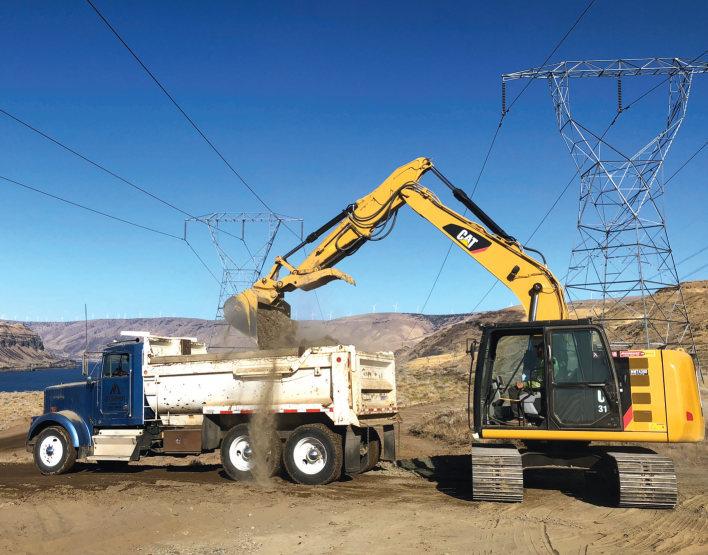


By the early 1800s, the American farm was a world of muscle, sweat, and patience. Fields were plowed behind teams of horses or oxen. Sowing was often done by hand, with seeds scattered and covered by crude tools. Harvest meant long days swinging a scythe or wielding a cradle, cutting grain stalk by stalk. In that era, the measure of a farmer’s productivity was bound almost entirely to human and animal endurance.
The mid-19th century began to change that. In 1831, Cyrus McCormick’s mechanical reaper made its public debut, offering the promise of harvesting grain at several times the pace of hand labor. At first, uptake was slow— many farmers were skeptical of the cost and maintenance—but the reaper would eventually
help open the door to a new era. Soon, other inventions followed: improved seed drills planted crops at uniform depths and spacing, boosting germination rates and yields; more efficient plows cut through soil with less effort, making it possible to farm larger acreages.
Steam power entered the fields in the mid-1800s. Early steam tractors were bulky, expensive, and prone to breakdown, but they hinted at the future. By the turn of the century, gasoline-powered machines had begun replacing animal teams altogether, freeing farms from the biological limits of horsepower. Alongside these advances came the combine harvester, which could cut, thresh, and clean grain in a single pass. Early combines were pulled by horses or steam
engines, but by the early 20th century, self-propelled models were revolutionizing harvest.
As the decades rolled forward, the pace of change quickened. In the post-World War II period, agriculture became the proving ground for the Green Revolution. High-yield crop varieties emerged from research stations, accompanied by an explosion of synthetic fertilizers, pesticides, and herbicides. Irrigation expanded in the West, turning arid plains into productive cropland. Tractors grew more powerful and versatile, equipped with hydraulics, multiple gears, and attachments that could plant, cultivate, and harvest a variety of crops. The numbers told the story: in 1930, producing 100 bushels of corn required as much as 20 labor-hours; by the

1970s, that same amount could be grown in just a fraction of the time.
Yet efficiency came with tradeoffs. The chemical inputs that boosted yields also increased agriculture’s reliance on petroleum and contributed to soil degradation, water pollution, and pest resistance. In response, researchers began looking toward smarter, more targeted methods of farming.
By the late 20th century, electronics entered the picture. Satellite-based GPS guidance began appearing on tractors and combines, allowing operators to steer with precision and avoid redundant passes. Onboard computers monitored engine performance, fuel efficiency, and even crop yield in real time. Precision farming was born—a philosophy that used data to make each field, and even each row, more productive with fewer inputs.

The 21st century has taken that philosophy to new heights. Today, a farmer in Iowa can sit in a climate-controlled cab, hands off the wheel, while a GPS-guided tractor plants seeds with centimeter accuracy. Drones buzz overhead, capturing high-resolution images that reveal stressed plants or pest outbreaks before the human eye can detect them. Soil sensors transmit moisture and nutrient data to a farmer’s phone, prompting irrigation or fertilizer applications only where needed. Variable-rate technology adjusts the amount of seed, water,

and fertilizer applied across a field, minimizing waste and environmental impact.
In some cases, machines have become almost entirely autonomous. Robotic harvesters pick fruit in orchards, guided by computer vision systems. Selfdriving planters and sprayers navigate fields day and night.
Artificial intelligence analyzes weather data, market trends, and historical yield maps to suggest the optimal planting schedule for each crop.
about the relationship between people and the land, and how each new technology has shifted that balance. In the 1800s, farmers walked every acre they owned, felt the soil with their hands, and knew each plant by sight. Today, many monitor their crops from a computer screen miles away. Some lament the loss of that direct connection, while others see it as the only way to feed a growing global population in a changing climate.
Looking ahead, agriculture is poised for yet another transformation. Climate change, resource constraints, and shifting consumer demands are driving interest in regenerative practices like no-till farming, cover cropping, and integrated pest management. These methods seek to rebuild soil health, store carbon, and reduce
chemical use—sometimes in partnership with high-tech tools, sometimes in deliberate return to low-tech wisdom. Emerging innovations include robotics that mechanically remove weeds without herbicides, AI systems that fine-tune water use, and even vertical farms that grow produce indoors under LED lights.
Two hundred years ago, a farmer’s most valuable tools were muscle and time. Today, they are data and adaptability. The arc from hand tools to hightech machinery tells a story of ingenuity, necessity, and the constant push to do more with less. It is also a reminder that the future of farming—like its past—will be shaped as much by the values and choices of the people working the land as by the

The result is a kind of agriculture that would be unrecognizable to a 19th-century farmer. Where once a team of laborers spent days harvesting a few acres, now a single operator—or even no operator at all—can manage hundreds in the same time. The transformation has reshaped rural economies, reduced the need for manual labor, and altered the very scale of what it means to be a farm. The story of this evolution is not just about machines. It’s

machines that serve them.
19th Century
• Power source: Human muscle & draft animals
• Key tools: Hand plow, cradle scythe, seed drill, mechanical reaper
• Harvest speed: A few acres per
day with a crew
• Average U.S. farm size: ~200 acres (many smaller)
Early–Mid 20th Century
• Power source: Steam, then gasoline tractors
• Breakthroughs: Combines, mechanized plowing & planting
• Green Revolution: Highyield seeds, synthetic fertilizers, pesticides
• Labor savings: Corn
production time dropped from ~20 labor-hours per 100 bushels (1930) to a few hours (1970s)
Late 20th Century
• Advances: GPS guidance, onboard computers, yield mapping
• Precision farming: Datadriven planting, fertilizing, and harvesting
21st Century
• High-tech tools: Drones,
IoT (internet of things) sensors (devices that can detect changes in machinery and link to internet sites for maintenance), AI analysis, autonomous tractors
• Variable-rate tech: Inputs tailored to exact field needs
• Focus: Efficiency plus sustainability, regenerative agriculture, climate resilience

A century after ranch hands first matched skills before wooden grandstands and chalkline arenas, rodeo in the Pacific Northwest is both a living museum and a thriving modern sport. From Oregon’s Pendleton Round-Up and St. Paul Rodeo to Washington’s Ellensburg Rodeo and Idaho’s Caldwell Night Rodeo, a tight circuit of small towns and mid-sized cities now anchors one of the Professional Rodeo Cowboys Association’s most vibrant regions. It’s a story that begins with frontier stock work and ends with nationally televised
performances, multimillion-dollar economic impacts, and persistent debates over animal welfare and tradition.
How it started
The Pacific Northwest’s signature shows grew from local harvest festivals, stock-handling contests, and boosterism during the first decades of the 20th century. Pendleton, the region’s most famous rodeo, launched in 1910 after local ranchers and merchants organized a “frontier exhibition” to celebrate the area’s ranching heritage. The inaugural Round-Up drew what newspapers





called the largest crowd in the town’s history and quickly became a late-summer ritual. Apart from pauses during World War II and the 2020 pandemic year, it has run continuously ever since. Washington’s Ellensburg Rodeo followed in 1923, built by ranchers, tribal members, farmers, and civic leaders who pooled sweat equity to put their community on the map. The volunteer-run show began as a local contest among ranch hands and has grown into a top-tier PRCA stop that now attracts more than 600 contestants and pays out upward of $700,000 over Labor Day weekend.
Other Northwest mainstays arrived in the 1930s. Oregon’s St. Paul Rodeo started in 1935, when local farmers turned a baseball diamond into a track and arena—a community project that has since matured into a ProRodeo Tour staple and a ProRodeo Hall of Fame inductee. Across the Cascades, Omak, Washington, launched its stampede the same year and added a publicity grabber: a perilous, river-crossing “Suicide Race” that would become one of the most controversial traditions
in the sport.
By mid-century, the Northwest’s summer calendar was studded with arena lights: Sisters (Oregon) established “The Biggest Little Show in the World,” Caldwell (Idaho) embraced night-rodeo spectacle, Kitsap (Washington) built a fair-and-rodeo identity, and Lewiston (Idaho) joined the “Big 4” of Inland Northwest events. Together they shaped a regional circuit that, in PRCA parlance, is now the Columbia River Circuit.
What makes the Northwest unique
Two threads define the Northwest rodeo identity: deep collaboration with tribal communities and a strong, volunteer-driven civic spirit. At Pendleton, the Happy Canyon Indian Pageant and Wild West Show—staged alongside the Round-Up since 1914—has become a signature cultural event. The Oregon Legislature designated it the state’s official outdoor pageant, affirming a long-standing place for Native storytelling and performance inside rodeo week.
Ellensburg’s origin story likewise highlights a coalition of ranchers, “Indians,” and
townspeople working together; that shared ownership still shows in the volunteer force that powers the Labor Day showcase.
And at Omak’s Suicide Race— run down a 62-percent slope into the Okanogan River—many of the riders are Colville Tribes members who frame the event as a spiritual test and a preservation of horse-warrior tradition, even as critics decry the danger to horses and riders. Horses must pass veterinary checks and swim and hill tests before competing, but the race’s history of animal fatalities keeps it at the center of a perennial northwest debate over what traditions should endure.
The modern circuit
Today the Columbia River Circuit encompasses roughly 60 PRCA-sanctioned events across Oregon, Washington, and parts of Idaho, with circuit finals in Redmond, Oregon. For many competitors, stringing together checks on this regional schedule is a pathway to the PRCA’s National Finals Rodeo in Las Vegas.
The tentpoles are familiar names with fresh momentum:
• Pendleton Round-Up (September, Pendleton, Oregon). A multiple-time PRCA Large Outdoor Rodeo of the Year, Pendleton blends classic events with its famed Indian relay races and non-motorized Westward Ho! parade. In 2024 it set attendance records during two performances and generated an estimated $60 million for the local economy, underscoring how important a century-old event can be for a 21st-century town.
• Ellensburg Rodeo (Labor Day weekend, Ellensburg, Washington). Now more than a century old, it’s routinely ranked
Continued page 10


Klickitat County Harvest
Continued from page 9
among the nation’s elite. The show also hosts a stop on PRCA’s Xtreme Bulls tour, giving fans a dedicated, high-octane bullriding program in addition to the weekend’s full rodeo.
• St. Paul Rodeo (July 4 week, St. Paul, Oregon). Billed as the “Nation’s Greatest Fourth of July Rodeo,” St. Paul’s volunteer committee has pushed production values while preserving the smalltown feel. The rodeo earned Columbia River Circuit’s Large Rodeo of the Year and, in 2023, a place in the ProRodeo Hall of Fame.
• Sisters Rodeo (June, Sisters, Oregon). The “Biggest Little Show in the World” has transformed into one of the region’s hottest tickets; the 85th anniversary edition this summer sold out, with added standing-room options and Cowboy Channel coverage keeping pace with demand. A local auction raised more than $61,000 for scholarships, a reminder that many Northwest rodeos double as engines for civic philanthropy.
• Caldwell Night Rodeo



(August, Caldwell, Idaho). A proud “Top 20” ProRodeo, CNR is in the midst of a $7.5 million campaign to expand seating and modernize its historic grounds— investments supporters say will push attendance and drive local revenues in a city that already sees an estimated $10–$12 million annual impact from the week.
• Lewiston Roundup (September, Lewiston, Idao). A Columbia River Circuit member and part of the Big 4, Lewiston draws more than 22,000 attendees across three to four performances and maintains a steady nonprofit
operation year-round.
• Moses Lake Round-Up & Kitsap Stampede (August, WA). Moses Lake’s PRCA stop posts nationally competitive results and payouts, while Kitsap marked 75 years of rodeo in 2024—evidence that even urbanizing counties along the Puget Sound still turn out for late-summer bucking chutes.
What’s changed—and what hasn’t
Production and media. A rodeo that once unfolded at a rancher’s pace now runs on broadcast time. Committees choreograph two-
Klickitat County Harvest 11 and-a-half-hour shows to the minute, syncing replays, sponsor elements, and arena resets for live streams and cable broadcasts. The Cowboy Channel’s national coverage has boosted the profile of Northwest stops—and, at times, turbocharged ticket demand after viral moments. (Sisters’ 2024 arena incident involving a bull that hopped a fence brought unwanted headlines, but the event rebounded with even stronger interest this year.)
Economics. In towns where hotel rooms sell out and parade lawn chairs stake the sidewalks days in advance, rodeo is big business. Pendleton’s week reportedly generated more than $60 million in 2024; Caldwell’s upgrades aim to secure its status among large outdoor rodeos and attract larger crowds; and community auctions and youth programs—in Sisters and elsewhere—turn fandom into scholarships and 4-H and FFA support.
Safety and animal welfare. The region’s committees have steadily tightened veterinary checks, chute procedures, and arena design, particularly at high-risk events. The Moses Lake RoundUp’s PRCA results pages read like any major stop—proof of standardized stock contracts, judging, and protocols. Yet controversy persists, especially around Omak’s Suicide Race, where long-time critics cite horse deaths and injuries and demand an end to the event. Supporters counter with tradition and enhanced testing requirements, reflecting a broader national conversation: how to honor heritage while ensuring 2025 standards of humane treatment Culture. The Northwest’s rodeos lean into what set them apart
in the first place: community and pageantry. Pendleton’s non-motorized Westward Ho! Parade and nightly Happy Canyon Pageant keep historic horse culture—and Native representation—front and center.
Ellensburg’s volunteer ranks still “fuel the fire,” in the committee’s words. And smaller shows cultivate distinct personalities: Caldwell’s after-dark atmosphere, Sisters’ laser-focus on the core rodeo program, and St. Paul’s Independence-week spectacle.
The season ahead
By early summer, the Columbia River Circuit is already in full swing. Sisters wraps the second weekend of June; St. Paul lights up the Fourth; the Kitsap Stampede and Omak Stampede press through August; Ellensburg crowns Labor Day weekend; and Pendleton closes the regional book in mid-September—these days with the PRCA’s Xtreme Bulls Tour Finale kicking off
the week over at Happy Canyon Arena. It’s a cadence that moves fans from pine forests to wheat country to basalt coulees and back again.
The stars who ride that loop are increasingly year-round professionals, hauling from Texas to Utah to Oregon and back, but the Northwest’s shows remain distinctly local in flavor. Directors still sell programs and park cars. Grand entries still carry school colors and veteran honor guards. And many arenas still sit a short walk from main streets where the coffee shop hosts a cowboy poetry reading on Thursday and a barn dance breaks out behind the hardware store on Friday.
A balancing act
As the sport grows, committees face a familiar set of pressures: modernizing facilities without losing grit, accommodating television windows while protecting livestock and people, and navigating cultural scrutiny
with transparency. Pendleton, Ellensburg, and St. Paul have largely threaded that needle by leaning on deep volunteer bases, reinvesting in safety and production, and foregrounding the Northwest’s unique blend of ranching, tribal culture, and small-town hospitality. The Omak Suicide Race remains an open question, a lightning rod each August that tests the region’s willingness to evolve tradition. Where it stands
If ticket sales and expansion plans are any guide, Pacific Northwest rodeo is not a museum piece—it’s a growth story. Sisters is selling out; Caldwell is adding seats; Lewiston’s gates still click past 22,000; Kitsap is celebrating milestone anniversaries; and Pendleton, the granddaddy of them all, just posted record crowds and a modern-era economic bump that many bigger cities would envy. Overlay that
Continued page 14


WEDNESDAY, AUGUST 13, 2025
• 8 a.m.–10 p.m.: Fair Office hours
• 8 a.m.: Horse Classes begin
• 10 a.m.–12 p.m.: SWINE VET CHECK & WEIGH IN; Bruce Cameron Livestock Barn
• 12 p.m.–2:30 p.m.: RABBITS, POULTRY & CAVY VET CHECK & CAGING; Small Animal Barn
• 12 p.m. – 1 p.m.: SHEEP & GOAT VET CHECK & WEIGH IN; Bruce Cameron Livestock Barn
• 2–4 p.m.: BEEF & DAIRY CATTLE VET CHECK & WEIGH IN; Bruce Cameron Livestock Barn
• 2:30 p.m.: Rabbit, Poultry & Cavy exhibitors meeting; Small Animal Barn
• 5:15 p.m.: MANDATORY Livestock exhibitors meeting
• 4 p.m.: Ranch Sorting Bill Conboy Arena
• 10 p.m.: CURFEW - animal welfare check, all barns closed to the public
THURSDAY, AUGUST 14, 2025
• 7 a.m.–10 p.m.: Fair Office hours
• 7 a.m.: All stalls and alleys must be clean
• 7 a.m.: Fair Board Meeting
• 9 a.m.: Exhibit Building
Opens
• 8 a.m.: Swine Exhibitors
Meeting in Swine show ring
• 8 a.m.: Horse Classes begin
• 8:15 a.m.: Goat (dairy, meat, and fiber) Exhibitors Meeting at the Goat show ring
• 8:30 a.m.: Goat Department Order of Show:
1. Market Goats
2. Dairy Goat Breed stock
3. Meat Goat breed stock
4. Fiber Goat
• 8:30 a.m.: Market Swine classes begin, Breeding and Open Classes to follow
• 8:30 a.m.: Market Lamb classes begin, Breeding and Open Classes to follow
• 9 a.m.: Cavy Showmanship followed by Conformation Classes; Small Animal Barn
• 10 a.m.: Beef Exhibitor
Meeting at the Bruce Cameron Livestock Barn followed by Order of Show
1. Market Steer Classes
2. Open Beef Classes
3. Breeding Stock Classes
4. Market Class Championships
• 1 p.m.: Peewee Swine Showmanship
• Following: Swine Department Costume Class will be held 30 minutes AFTER the completion of Peewee Swine Showmanship. The theme is Hawaiian Hoedown!
• 1 p.m.: Rabbit Showman-
ship; conformation classes follow
• 2 p.m.: Goat Groom Squad
• 2:30 p.m.: KPUD demonstration
• 3 p.m.: Storytime at the Bookmobile
• 4 p.m. Pending Horse Show Completion: OPEN AND FAMILY PENNING
• 5 p.m. - 7 p.m.: Reno’s Stage
Live Music
• 5 p.m. - 7 p.m.: Kick-Off BBQ
• 6 p.m.: 4-H Archery fun shoot, Joan Frey Arena
• 8 p.m.: COWBOY AUCTION at Reno’s Stage
• FOLLOWING: Penning Finals, Family Penning First
• 8 p.m.: Exhibit Building closes
• 8 p.m.: Small Animal Barn closes
• 10 p.m.: CURFEW - animal welfare check, all barns closed to the public
FRIDAY, AUGUST 15, 2025
• 7 a.m. - 10 p.m.: Fair Office hours
• 7 a.m.: All stalls and alleys must be clean
• 7 a.m.: Fair Board Meeting
• 9 a.m.: Exhibit Building Opens
• 8 a.m.: Sheep Showmanship begins
• 8 a.m.: Swine Showmanship begins
• 8 a.m.: Horse Classes begin
• 9 a.m.: Poultry Market Classes; Small Animal Barn
• 9 a.m.: Market Goat youth classes followed by Dairy Goat Showmanship adult classes
• 9 a.m.: Beef Showmanship begins
• 11 a.m.: Reno’s Stage Entertainment Begins
• 11 a.m.: Storytime at the Bookmobile
• 12 p.m.: Dairy Cattle Classes, Open classes follow
• 12:30 p.m.: Storytime at the Bookmobile
• 1 p.m.: All-Around Showmanship Contest (Beef, Dairy Cattle, Dairy Goats, Meat Goats, Sheep, Swine and Horses.)
• 2 p.m.: Pack Goat Showmanship and open Pack Goat Class
• 2:30 p.m.: KPUD demonstration
• 3 p.m.: Storytime at the Bookmobile
• 3 p.m.: Open Branding begins; finals follow; Western Games Awards presented before Branding Finals.
• 6 p.m.: 4-H Archery Buckle Competition; 4-H Archery Lighted Nock Vegas Round Shoot, Joan Frey Arena
• 8 p.m.: Exhibit Building closes
• 8 p.m.: Small Animal Barn

closes
• 8 p.m.: Live Music Reno’s Stage
• 10 p.m.: CURFEW - animal welfare check, all barns closed to the public
SATURDAY, AUGUST 16, 2025
• 6 a.m.: Work Arena and Stock
• 7 a.m. - 10 p.m.: Fair Office hours
• 7 a.m.: All stalls and alleys must be clean
• 7 a.m.: Fair Board Meeting
• 7:30 a.m.: Dog Check-in, Classes begin at 8 a.m.
• 8 a.m.: Dog Showmanship begins followed by Obedience classes; Dog Agility classes follow the lunch break
• 8 a.m.: Small Animal All Around Showman Contest; Small Animal Barn
• 8 a.m.: Archery Vegas Style Shoot - Open to the Public; $20 entry fee; registration at 7:30 a.m. at Joan Frey Arena
• 8:30 a.m.: Dairy Goat Milking Contest followed by Costume, Goat Calling and Agility classes
• 8:30 a.m.: County Team Roping Event; Bill Conboy Arena
• 9 a.m.: Exhibit Building opens
• 9 a.m.: parade participants
assemble at Goldendale Primary School
• 10 a.m.: DOWNTOWN PARADE STARTS
• 11 a.m.: Storytime at the Bookmobile
• 11 a.m.: Reno’s Stage Entertainment Begins
• 11:30 a.m.: KPUD demonstration
• 11:45 a.m.: Parade of Champions (line-up at 11:30)
• 12:15 p.m.: Hay & Grain
King awards presented in the Bill Conboy Arena
• 12:30 p.m.: NPRA RODEO begins
• 12:30 p.m.: Storytime at the Bookmobile
• 1 p.m.: Small Animal Costume & Drag Races; Small Animal Barn
• 2 p.m. - 3 p.m.: Rabbit Judging Contest; Small Animal Barn
• 3 p.m.: Storytime at the Bookmobile
• 3:30 p.m.: TBD - Klickitat County Sheriff’s Office
Demonstration with K-9
Unit, Profi at Dog Show Ring near main Fair entrance
• 4 p.m. - 7 p.m.: Phil Garner
Memorial Steak Dinner
Location: Main Grandstands
Cafeteria
Price: $20
Tickets: available on site
Menu: 8 oz BBQ Tri-Tip,
Baked Potato, Baked Beans, Green Salad, Dinner Roll & Butter
• 5 p.m.: MARKET STOCK SALE at the Eleanor Dooley Memorial Livestock Barn
• 8 p.m.: Exhibit Building closes
• 8 p.m.: Small Animal Barn closes
• 9 p.m.: Barn Dance & Beer Garden - Countryfied on Reno’s Stage
• 10 p.m.: CURFEW - animal welfare check, all barns closed to the public
SUNDAY AUGUST 17, 2025
• 6 a.m.: Work Arena & Stock
• 7 a.m. - 5 p.m.: Fair Office hours
• 7 a.m.: All stalls and alleys must be clean
• 7 a.m.: Fair Board Meeting
• 8 a.m.: RODEO SLACK BEGINS
• 9:30 a.m.: Dog Check-in, Classes begin at 10 a.m.
• 10:30 a.m.: Dog Show Jumper Agility & Rally Obedience Classes begin
• 9 a.m.: Goat awards at Goat show ring followed by Goat Calling Contest and Agility
• 9 a.m.: Exhibit Building opens
• 9:30 a.m.: Horse Awards and Exhibitors MANDATORY
MEETING, Eleanor Dooley
Memorial Livestock Barn
• 9 a.m.: Church Service by Centerville Community Church at the Reno’s Stage
• 10 a.m.: Livestock Judging Contest
• 10:30 a.m.: Reno’s Stage Entertainment Begins
• 12:15 p.m.: LIVESTOCK PARADE (line up at 11:45)
• 1 p.m. - 4 p.m.: State Fair Sign-up in the Exhibit Building; 4-H Department
• 1 p.m.: Dog Costume Class
• 1 p.m.: NPRA RODEO starts
• 3 p.m.: 4-H Awards, Reno’s Stage
• 3 p.m.: All Livestock Barns Closed to the Public (haul out)
• 3 p.m.: HORSES RELEASED STALLS CLEANED & DECORATIONS REMOVED
• 3:00 p.m.: Exhibit Building closes for exhibit take down
• 4:00 p.m.: Exhibits released from Exhibit building.
• 4:30 p.m.: ALL LIVESTOCK EXHIBITS RELEASED Decorations removed and stalls cleaned
• 5 p.m.: Exhibit Building closes. Any exhibits not claimed will be taken to the Fair Office
Continued from page 11
with a robust 60-event circuit and national TV carriage, and the result is a regional sport that looks both backward and forward—rooted in the work of handling stock and the spectacle of human-animal athleticism, and reshaped by fans who want a tight, two-hour show under Northwest skies.
Rodeo here is still, at heart, a town pulling together—setting chutes, painting panels, sewing flags, sweeping grandstands—so a few dozen seconds can decide a paycheck. On a September afternoon in Pendleton, a bronc rider still cuts a wide arc across grass in front of a 17,000-seat stadium, and the public-address voice still says “Let ’er Buck.” On Labor Day in Ellensburg, the wind still kicks dust across the valley as a steer wrestler snaps to the horns. In St. Paul, the Fourth still ends with fireworks reflected in arena dust. And in
Sisters, under the trees, a rodeo clown still waves to kids who are already counting down to next year.
That, more than anything, may explain the Pacific Northwest’s rodeo resilience: it’s a show about the past that gives communities a reason to gather in the present, year after year, chute after chute.


Melinda Myers
As temperatures rise, some annuals slow down or stop flowering due to heat stall. They will recover as temperatures cool but may leave your gardens or containers looking less colorful.
Take some time now to evaluate annual flowers that are thriving in your garden and those that may need to be left off the plant list for next year’s garden.
Start looking for more heattolerant plants and cultivars to use in the future. A visit to your local botanic garden and viewing gardens in your neighborhood can help provide insight and inspirations for plants suited to your summer weather.
Zinnias are known for their heat and drought tolerance. These long-blooming annuals come in

a variety of colors and heights. Wheat, plume, and crested celosia not only add color, but also interesting flower shapes to gardens and arrangements.
Angelonias, also known as summer snapdragons, are upright plants that make great vertical accents and add season-long color to containers and gardens. Granvia strawflowers are taller, more vigorous plants with larger flowers than older strawflower varieties. Enjoy them in the garden and for months after in arrangements, dried wreaths, and other decorations.
Annual vinca, Catharanthus, with its shiny leaves and longlasting flowers, thrives in hot, dry weather. The dainty flowers of the Soiree® Kawaii series and the fringed, ruffled flower petals of the Soiree® Flemenco series provide a unique flare. Include pentas with their star-shaped flowers to help attract and support butterflies. You’ll find plants with white, red, pink, lavender, violet, and bicolor flowers, and even a few trailing varieties.
Cupheas are not only heat tolerant but are magnets for hummingbirds. These season-long bloomers are covered with flowers and do not need deadheading. Mandevilla is another longblooming, heat-tolerant plant that thrives in sunny locations. You’ll find upright, trailing, and tall climbing varieties to include in gardens, containers, and hanging baskets.
If you are looking for a heattolerant, trailing plant, consider bidens. The BeeDance® series is an

earlier and continuous flowering variety. Moss roses and other portulacas are also trailing and
low-growing plants that can be used as annual groundcovers, edging plants, and trailers in











containers.
Look for more heat-tolerant cultivars of your favorite annuals that tend to stop blooming during hot weather. Heatopia™, Hot® Waterblue, Techno®, and Laguna® lobelias show more heat tolerance than many older lobelia cultivars. White Stream™, Snow Princess®, and Frosty Knight® are a few alyssum cultivars to consider. They tolerate the heat but prefer moist well-drained soil.
Hot Pak™ French marigolds have been bred for increased hot weather tolerance. The triploid marigolds like Endurance™ and
Zenith™ are a cross between the African and French marigolds. They have the longer bloom time of the French marigold and the heat tolerance of the African species.
Don’t give up on heat stalled annual plants in your garden and containers. Continue to water the heat-stressed plants as needed but wait for them to recover before fertilizing if needed. Trim back leggy plants, and once the temperatures cool, the plants will start flowering.


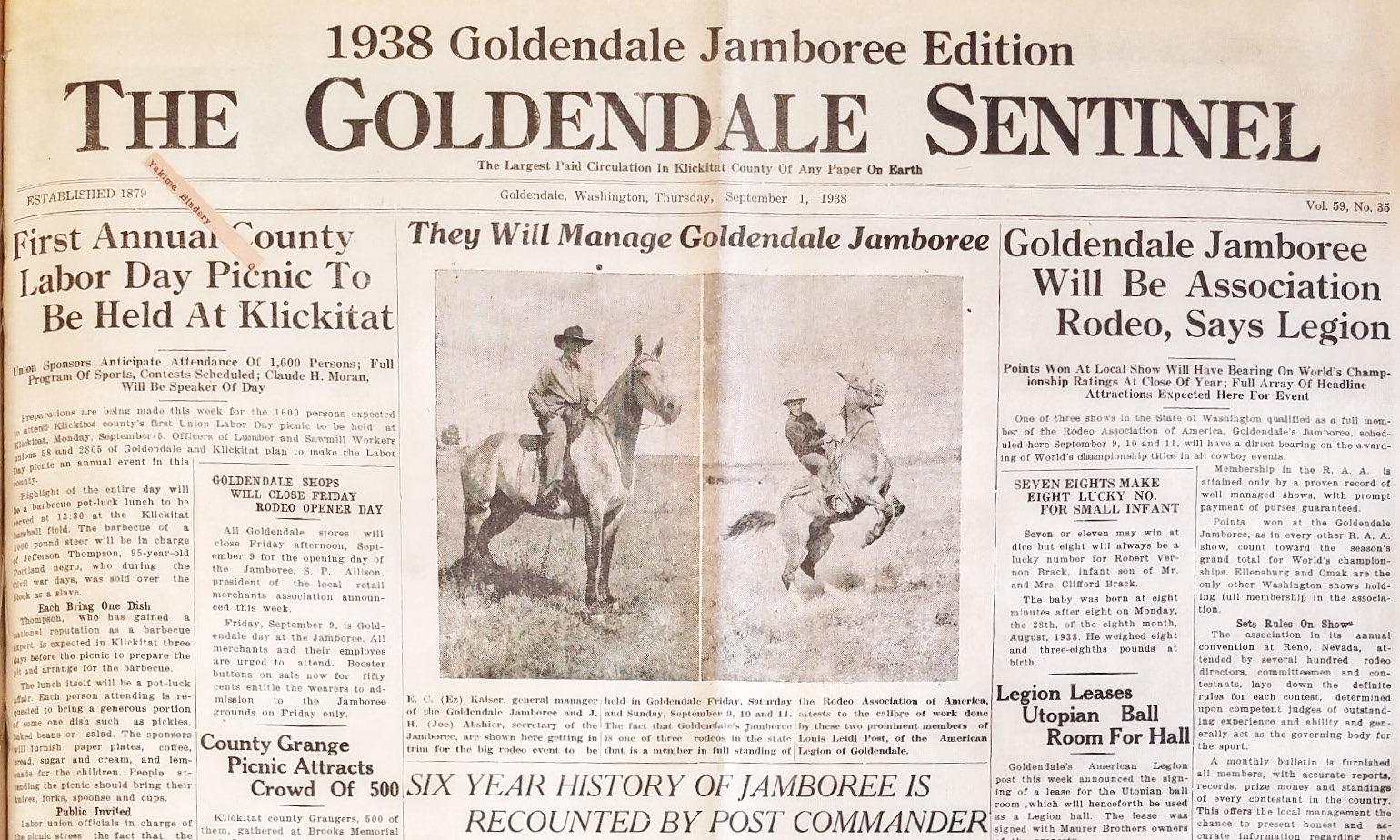

Locally made treats & products | locally owned business
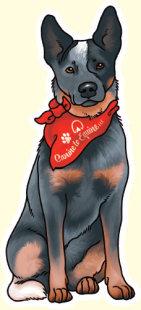





Yummy, crunchy freeze-dried treats All natural, gluten-free, baked dog & horse treats
Home-sewn, personalized, embroidered dog bandanas Cat treats, too!




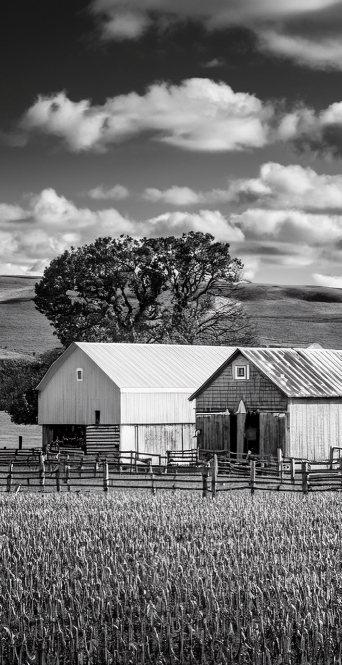
September to October (Early Fall):
Expect lingering warmth well into autumn. The region is likely to see above average temperatures, with September settling around the 60 °F mark and October cooling slightly to around 57 °F. At the same time, rainfall is expected to be wetter than average, offering some relief from the summer’s dryness.
November to mid-December (Late Fall to Early Winter):
While precise long term forecasts are scarce, historical patterns suggest a transition toward cooler and wetter conditions as the PNW moves deeper into storm season. The remnants of a persistent ridge of high pressure should break down around October, heralding greater storminess and more seasonal chills.
Winter (Mid-December through December 31):
Although the Farmers’ Almanac hasn’t yet released its winter outlook for 2025–26, we can infer from authoritative sources: Neutral ENSO conditions (meaning neither El Niño nor La Niña) are expected to continue into the winter. Coupled with the end of the ridging pattern, this points to typical to slightly coolerand-wetter-than-normal winter — not excessively snowy, but with a steady stream of rain and occasional snow at elevation.
August’s blazing sun reluctantly bows out, making way for kindly September—locking in warm days near 60 °F and damp nightair that seems to carry a whisper of change. The mist in October

rolls in more often, and by month’s end, fireplaces may need tending even as the maples glow.
As November approaches, skies deepen, and the Pacific
opens its arms—moisture grows thoughtful and plentiful, nursing the parched land with soaking rains.
Come December, the mountain
hemlocks bear early snow, while the valley keeps watch with steady drizzle. A winter neither
Continued on page 18




Continued from page 17
harsh nor timid—balanced in moisture, gentle in chill, and promising a rhythm with which farmers and foresters alike will fare well.
Summary Table
Sept–Oct (Fall) Warmer than normal (~60 °F → 57 °F)
Wetter than normal, sunlit days early, transitioning to cozy, damp evenings
Nov–mid-Dec Moving toward average or slightly cooler
Increasing rainfall. Storm cycles becoming more frequent
Mid-Dec onward Near-
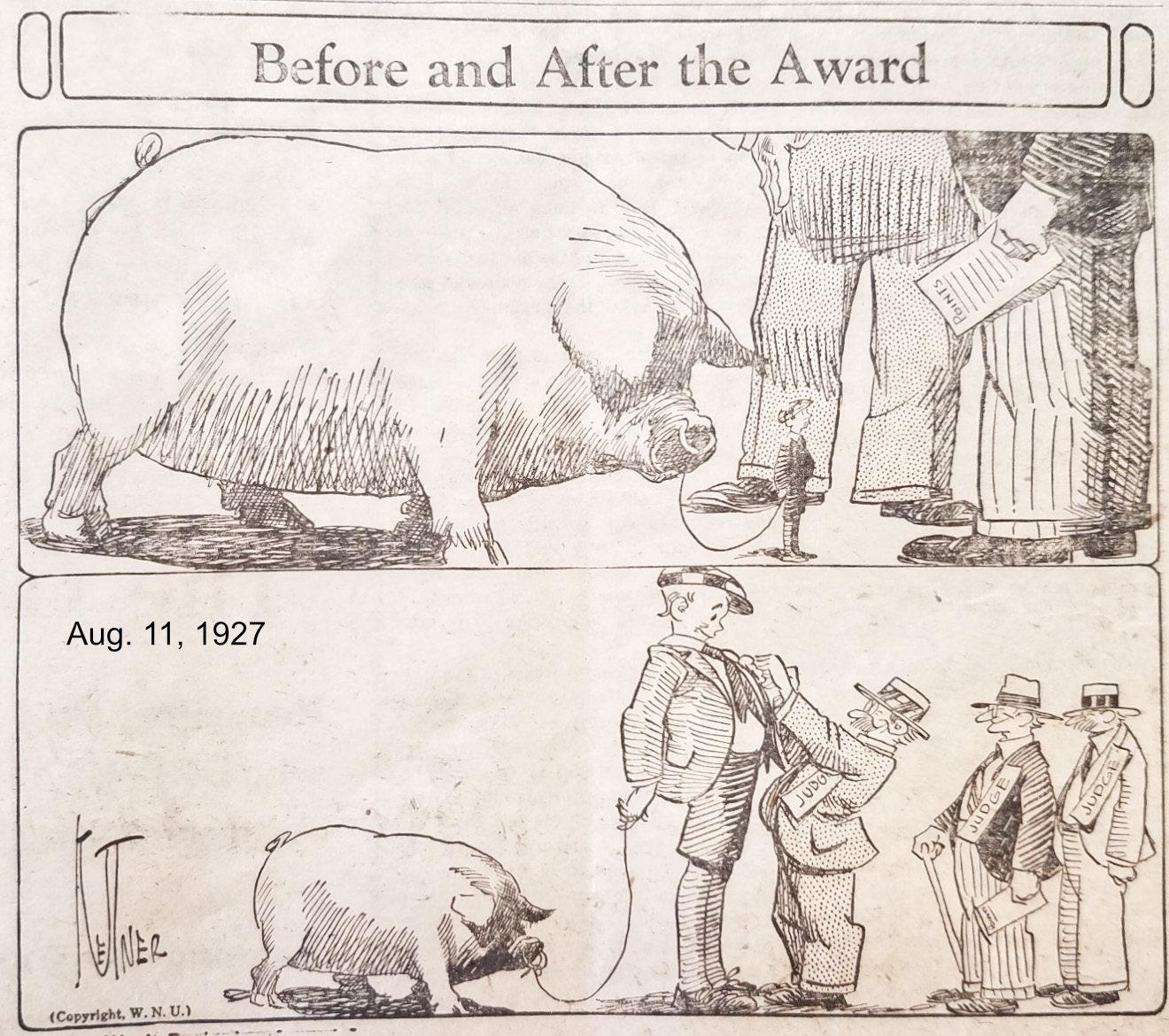
normal to slightly cool. Steady precipitation (rain, elevation snow). Balanced seasonal winter. For the Columbia River Gorge September–October – The Lingering Warmth and First Hints of Change
September stretches summer’s hand into fall, the Gorge still basking in afternoons that sometimes flirt with 80 °F, with the west wind carrying the scent of dry grass. Mornings, however, carry the first cool hush, a reminder to fetch the sweaters from cedar chests. October arrives with a slow dimming of the sun, bringing gentler days, more clouded skies, and a return of the dampness that greens the moss and swells the rivers.
Average highs in this span ease from the mid-80s to the upper50s, and lows drift from the high50s to the low-40s. The chance of a wet day climbs steadily, reaching nearly 1 in 3 by Halloween.
November – The Opening of Storm Season
By November, the Gorge wears its gray coat more often than not. The west wind carries more rain than dust, and the sound of the river deepens. Clouds stack high above the basalt cliffs, and the air smells of woodsmoke and wet leaves. On certain mornings, frost feathers the edges of the fields, a quiet signal that winter’s heralds are near.
Highs dip into the mid-40s to low-50s, lows into the 30s. Wet days reach over 50% frequency, with a growing chance of rainsnow mix in upper elevations.
December – The Settling of Winter
December settles in with a steady, quiet rhythm—rain whispering against windows, the rare snow falling thick and
it’s wood, pellets, or propane, make sure the stove is ready. Keep kindling dry and close at hand.
2025 Klickitat County Harvest 19 soft in the high places, and the wind sometimes rising to rattle shutters. The Gorge is not given to deep cold in the valleys, but the damp chill wraps itself close, encouraging the lighting of hearths and the brewing of tea.
With El Nino-neutral patterns expected, conditions will likely be slightly cooler and wetter than average. Storm cycles may arrive every few days, often preceded by bright, windy intervals.
Cozying Up for Gorge Winters
• Stock the Hearth: Whether
• Layered Warmth: Flannel sheets, wool throws, and draftstoppers for doors make evenings comfortable without needing to overheat the house.
• Kitchen Comforts: Autumn squashes, root vegetables, and hearty soups pair perfectly with darkening days.
Storm-Proofing for the Season
• Wind Readiness: Secure outdoor furniture, check the

stability of fences, and trim loose branches—west winds in the Gorge can roar without much warning.
• Rain Resilience: Clear gutters and downspouts now to handle heavier late-fall rains. Check basement and crawlspace drainage.
• Road Awareness: Keep sand or de-icer for slick mornings, especially near higher-elevation passes where rain may turn to black ice.
• Power Preparedness: Have
flashlights, batteries, and a few shelf-stable meals.
Closing reflection
In the Gorge, the year’s close is a season of contrasts—wind that can rattle the bones one day and lull you the next, rain that nourishes the earth even as it keeps you indoors. Yet, there’s a rare comfort in this: the steadying rhythm of the river, the glow of lamplight against deepening skies, and the knowledge that each storm passed is one more chapter in the valley’s timeless story.




(StatePoint) Weatherizing your home for each season can make it more comfortable – but how to do it can be confusing. Here are four common weatherizing myths – busted! – to help get your home ready for cooler weather to come.
Myth 1: It doesn’t matter where your thermostat is placed.
Truth: Location, location, location! You may be spending more on heating and cooling than you need to be if your thermostat is in the wrong place. Placed in direct sunlight, you run the risk of getting false readings, as it can “think” the room is warmer than it actually feels, causing your air conditioner to turn on when it isn’t needed. Similarly, a thermostat placed near the kitchen often reads that the home is far warmer than it truly is due to the stove and oven. The best location is on an interior wall, centrally located and near areas where you spend the most time, ensuring these rooms are the most comfortable.
Myth 2: Closed curtains and blinds in cold weather prevent

heat escape.
Truth: According to the Department of Energy, shades and drapes can reduce heat loss from a warm room by up to 10 percent. However, opening curtains and blinds during the day when direct sunlight hits can also allow for a warming effect. In winter, draperies should be closed at dusk but opened at dawn.
In addition, heat escape through windows can be prevented with window insulation products such
as Duck brand Roll-On Window Kits, which create a barrier between outdoor air and a home’s interior, helping block drafts and air leaks. And, it’s also a myth that these are hard to install: A pre-taped edge makes for easy roll-on application, requiring no measuring, while fitting snuggly to indoor window frames to provide an airtight, crystal-clear seal.
Myth 3: It’s expensive to draftproof your home.
easy on the wallet and easy to install, requiring minimal -- if any -- tools.
Windows and doors are the two largest draft sources in any home and should be top priorities for homeowners. Duck brand MAX
Strength Silicone Weatherstrip
Seals are quick to install and seal various size gaps around windows and doors that may be allowing air to escape.
Myth 4: It’s cheaper to keep your home at a constant temperature.
Truth: A common misconception is that it’s better to keep your home at a constant temperature, even when you’re not home. However, if the system runs less during the day, it uses less energy. According to Energy. gov, you can save as much as 10 percent a year on heating and cooling by turning your thermostat back 7-10 degrees from its normal setting for eight hours a day.

















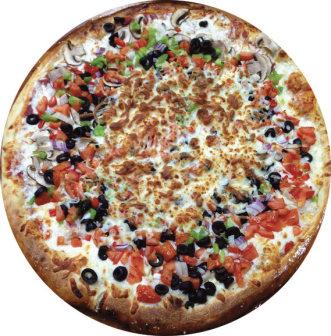






Truth: Homeowners can actually save hundreds of dollars annually on heating and cooling costs with proper weatherization early in the season. How do you do it? There are many inexpensive, do-it-yourself weatherization products that are
Still need more help? For additional tips and information, text “Weather” to 84444 to access Duck brand’s Project Selector, an online resource for project guides, instructional videos and more, or visit DuckBrand.com.
Don’t let common myths scare you. Weatherizing can be an affordable, easy do-it-yourself project–especially if you plan ahead.


Supported by these Elected
Billi Jean Bare, Assessor
509.773.3715 • klickitatcounty.org/149/Assessor
Heather Jobe, Auditor
509.773.4001 • klickitatcounty.org/1109/Auditor
Renea Campbell, County Clerk
509.773.5744 • klickitatcounty.org/186/County-Clerk
Lori Zoller, County Commissioner, Dist. 2
509.773.1248 • klickitatcounty.org/directory.aspx?EID=71
Ron Ihrig, County Commissioner, Dist. 3
509.773.0146 • klickitatcounty.org/directory.aspx?EID=72
Rick Hansen, District Court East Judge
509.773.4670 • klickitatcounty.org/498/District-Court-East
David Quesnel, Prosecuting Attorney
509.773.5838 • klickitatcounty.org/287/Prosecuting-Attorney
Bob Songer, Sheriff
509.773.4455 • klickitatcounty.org/373/Sheriff
Randall Krog, Superior Court Judge
509.773.5755 • klickitatcounty.org/877/Superior-Court
Greg Gallagher, Treasurer





509.773.4664 • klickitatcountytreasurer.org KlickitatCounty.org/148/Departments


































































